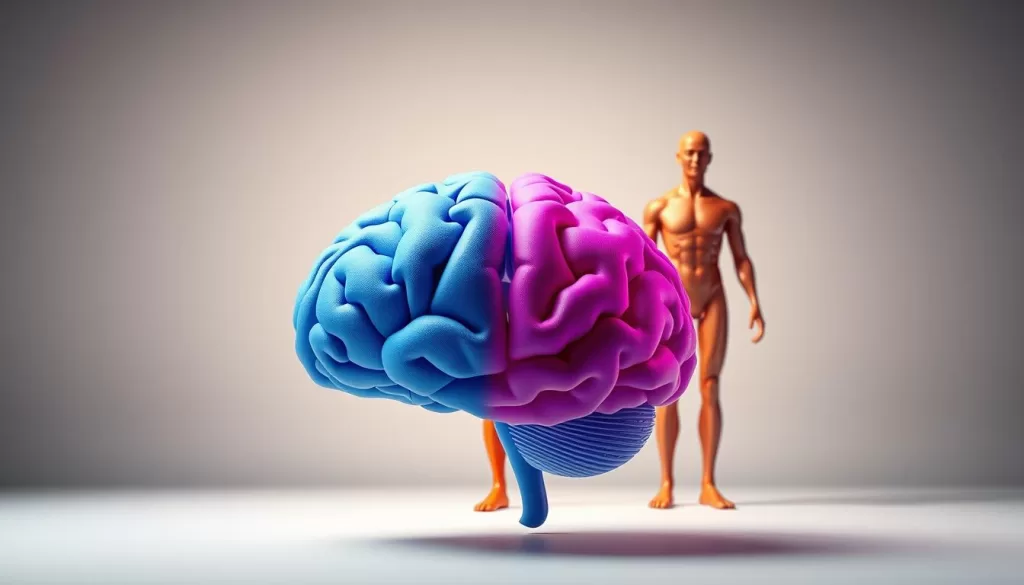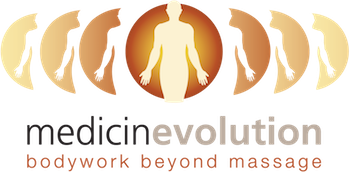Did you know that over 100 million Americans live with chronic pain? Recent studies show new neural pathways therapy is changing pain management. MedicinEvolution is leading this change with a new approach.
Managing chronic pain is tough. Traditional physical therapy is common, but new neural pathways therapy is gaining attention. It targets the nervous system to improve movement and reduce pain.
Key Takeaways
- New neural pathways therapy offers a novel approach to pain management.
- MedicinEvolution is leading the way in this innovative therapy.
- Comparing new neural pathways therapy to traditional physical therapy can help determine the best treatment plan.
- Chronic pain affects a significant portion of the population, making effective management crucial.
- Recent studies support the efficacy of new approaches in pain management.
The Science of Pain and Modern Treatment Approaches
Your brain plays a big role in how you feel pain. It’s not just the injury that matters. It’s how your brain sees those signals.
How Your Brain Processes Pain Signals
Your brain acts like a filter, deciding how intense pain signals are. This involves complex pathways. These can be changed by emotions, past experiences, and what you expect.
Why Traditional Pain Management Often Falls Short
Traditional pain management focuses on symptoms, not causes. This can fail, especially for those with chronic pain.
Limitations of Medication-Based Approaches
Medications can have big side effects and miss the pain’s root. Key limitations include:
- Risk of dependency
- Masking underlying issues
- Variable efficacy
The Need for Personalized Treatment
Personalized treatments, like New Neural Pathways Therapy, are more effective. They focus on the brain’s role in pain. This can lead to lasting relief.
What Is New Neural Pathways Therapy?
New neural pathways therapy is based on the brain’s ability to change itself. This is called neuroplasticity. It uses the brain’s natural ability to adapt and create new paths to reduce chronic pain.
The Science Behind Neural Rewiring Techniques
At the core of new neural pathways therapy are neural rewiring techniques. These methods aim to change how the brain responds to pain signals.
Understanding Neuroplasticity
Neuroplasticity is the brain’s ability to make new connections throughout life. This adaptability helps the brain recover from injuries and diseases. It’s the basis of new neural pathways therapy.
How Brain Reprogramming Techniques Work
Brain reprogramming techniques teach the brain to handle pain differently. Methods like pain reprocessing therapy help people change their pain perception. This way, they can “unlearn” pain.
Core Components of Cognitive Restructuring Therapy
Cognitive restructuring therapy is key in new neural pathways therapy. It helps identify and challenge negative thoughts that lead to chronic pain. Then, it replaces these thoughts with more positive ones.
| Therapy Component | Description | Benefit |
|---|---|---|
| Neural Rewiring | Techniques to reprogram the brain’s response to pain | Reduced chronic pain |
| Cognitive Restructuring | Identifying and challenging negative thought patterns | Improved mental outlook |
| Neuroplasticity Training | Exercises to enhance the brain’s adaptability | Enhanced pain management |
By understanding and using these components, new neural pathways therapy offers a hopeful way to manage chronic pain.
Traditional Physical Therapy: A Comprehensive Overview
Traditional physical therapy has been a key part of pain management and rehabilitation for many years. You might have seen it in your recovery or treatment plan. It’s known for helping improve strength, flexibility, and movement.
Key Elements and Methodologies
Traditional physical therapy uses many techniques, like manual therapy, exercises, and heat or cold therapy. These methods aim to help you regain function and lessen pain. Your physical therapist will make a plan just for you, based on your needs and goals.
Strengths in Rehabilitation and Recovery
Traditional physical therapy is great for getting better after injuries, surgery, or other issues that affect how you move. It focuses on the physical side of healing.
Limitations in Addressing Chronic Pain
While traditional physical therapy is good for many things, it might not be enough for chronic pain. That’s where new neural pathways therapy comes in. It targets the pain’s neural parts more directly.
The Missing Neural Component
Traditional physical therapy might not fully tackle the neural side of pain. Chronic pain involves complex neural pathways. These need specific stimulation and rewiring, which traditional therapy doesn’t focus on.
Plateau Effects in Long-term Treatment
Another issue with traditional physical therapy is the risk of hitting a plateau. You might see big improvements at first, but progress can slow down. This makes it less effective for long-term conditions.
Knowing about these points can help you make better choices for managing your pain. As you look into different therapies, think about what will best meet your needs.
New Neural Pathways Therapy vs. Physical Therapy: Key Differences
It’s important to know the differences between new neural pathways therapy and physical therapy for pain management. Each has its own way of treating pain, with different methods and results.
Treatment Focus: Brain vs. Body Approaches
New neural pathways therapy looks at how the brain handles pain. It uses techniques like cognitive restructuring to change how we feel pain. Physical therapy, however, focuses on the physical causes of pain, like muscle tension or injuries, through exercises and manual therapies.

Session Structure and Patient Involvement
Therapy sessions and how much patients are involved differ between the two. New neural pathways therapy includes guided exercises and education on managing pain, needing the patient to be active. Physical therapy also needs patient involvement but in different ways, through various activities.
Measuring Progress and Outcomes
Each therapy has its own way to measure success. New neural pathways therapy looks at changes in pain perception and thinking. Physical therapy checks for improvements in physical function and movement.
Short-term Relief vs. Long-term Resolution
It’s key to understand the difference between quick relief and lasting solutions. Research shows new neural pathways therapy can lead to lasting pain reduction. Traditional physical therapy might offer quick relief but might not solve chronic pain’s root causes.
Relapse Rates and Sustained Results
Looking at how often pain comes back and how long results last is also important. New neural pathways therapy, by focusing on pain’s mental side, might have lower relapse rates. Physical therapy might need more sessions to keep benefits.
In conclusion, choosing between new neural pathways therapy and physical therapy depends on your pain and needs. Knowing these differences helps you make a better choice for managing your pain.
How MedicinEvolution Is Leading The Way With New Neural Pathways Therapy
MedicinEvolution is changing the game in pain relief with new neural pathways therapy. They’re leading with innovative techniques in advanced brain therapy.
Pioneering Approaches to Advanced Brain Therapy
MedicinEvolution is making waves in pain management with neuroplasticity training. These methods help the brain handle pain differently. This gives hope to those with chronic pain.
Proprietary Neuroplasticity Training Methods
Their unique methods retrain the brain to process pain in new ways. This has led to big wins in reducing chronic pain and better lives for patients.
Patient Success Stories and Clinical Outcomes
MedicinEvolution’s success stories show their therapy works. Learn more about their methods and results on their website: https://medicinevolution.com/new-neural-pathways/.
Breakthrough Cases in Chronic Pain Management
The table below shows some major wins in chronic pain management:
| Patient Profile | Treatment Outcome | Duration of Treatment |
|---|---|---|
| 45-year-old female with chronic back pain | Significant reduction in pain | 12 weeks |
| 30-year-old male with migraines | Complete elimination of migraines | 8 weeks |
| 60-year-old female with fibromyalgia | Improved quality of life | 16 weeks |
These examples show MedicinEvolution’s therapy can really help with chronic pain.
Conditions That Respond Best to Each Therapeutic Approach
Choosing the right therapy for pain management is key. New Neural Pathways Therapy and Physical Therapy each have their own strengths. The best choice often depends on your specific pain condition.
Ideal Candidates for Neural Pathways Therapy
New Neural Pathways Therapy works well for some conditions. Chronic pain conditions that haven’t improved with usual treatments may find relief here.
Chronic Pain Conditions
Fibromyalgia, complex regional pain syndrome, and other chronic pain disorders can benefit. This therapy rewires the brain’s pain response, lowering pain intensity.
Trauma-Related Pain
Those with trauma-related pain, like PTSD, may also see benefits. It tackles the neurological side of pain and trauma, aiding in healing.
When Physical Therapy Remains Essential
While Neural Pathways Therapy is great for some, Physical Therapy is vital for many. It’s crucial after injuries or surgeries. It helps restore function, boosts mobility, and supports physical health.
Combining Therapies for Optimal Results
At times, using both therapies together is best. Physical Therapy can enhance physical function, while Neural Pathways Therapy can tackle chronic or trauma pain.
Making the Right Choice for Your Pain Management Journey
Choosing the right pain management therapy is a big decision. You need to think about what you need and what you want to achieve. Knowing the different factors that can affect your choice is key.
Assessment Factors to Consider
When looking at pain management options, think about how bad your pain is and your overall health. New Neural Pathways Therapy and physical therapy are two options you might hear about. They work in different ways based on your situation.
| Therapy Type | Focus | Benefits |
|---|---|---|
| New Neural Pathways Therapy | Brain-based approach | Addresses chronic pain through neural rewiring |
| Physical Therapy | Body-based approach | Enhances physical function and reduces pain |
Questions to Ask Your Healthcare Provider
It’s important to ask your healthcare provider the right questions. Ask about the good and bad of each therapy, what you can expect, and how they’ll track your progress.
“Understanding your treatment options and being proactive in your care can significantly impact your pain management journey.” – MedicinEvolution
Insurance Coverage and Accessibility
Insurance and how easy it is to get to treatments matter a lot. Check with your insurance to see what they cover.
Investment Considerations for Long-term Health
Cost is important, but think about the long-term benefits too. Good pain management can make your life better and save money on healthcare later on.
Conclusion: Embracing the Future of Pain Relief
The future of pain management is looking bright with personalized and innovative methods like new neural pathways therapy. You’ve learned that traditional physical therapy and new neural pathways therapy have their own strengths. New neural pathways therapy, led by MedicinEvolution, aims to rewire the brain to fight chronic pain.
This method has the power to change how we manage pain. By adopting the latest in pain management, you’re on your way to better pain relief. The future of pain management is exciting, with new neural pathways therapy at the helm.
As research keeps moving forward, we’ll see even more creative ways to handle pain. MedicinEvolution is leading this charge, offering advanced treatments for chronic pain’s complex issues.
FAQ
What is new neural pathways therapy, and how does it differ from traditional physical therapy?
New neural pathways therapy is a new way to manage pain. It focuses on changing how your brain works. Traditional physical therapy mainly works on your body.
This therapy uses special techniques to create new paths in your brain. It helps you deal with chronic pain better.
How does new neural pathways therapy work, and what are its benefits?
It changes your brain’s way of handling pain. This therapy is great for managing pain without needing lots of medicine. It also makes you feel better overall.
It’s especially good for people with chronic pain who haven’t found relief with other treatments.
What are the limitations of traditional physical therapy in addressing chronic pain?
Traditional physical therapy is good for getting better after an injury. But, it doesn’t always solve chronic pain problems. It mainly focuses on the physical symptoms, not the brain’s role in pain.
It might help a bit, but it can’t keep up with chronic pain over time.
Can new neural pathways therapy and physical therapy be used together?
Yes, using both therapies together can be very effective. This way, you get the best of both worlds. It helps with both the physical and brain aspects of pain.
What conditions respond best to new neural pathways therapy?
It works well for people with chronic pain. This includes complex regional pain syndrome and fibromyalgia. It’s for those who are ready to change their brain’s pain handling.
How do I determine if new neural pathways therapy or physical therapy is right for me?
Think about your pain, what treatments you’ve tried before, and what you prefer. Talking to your doctor is key. Ask about the good and bad of each therapy, and if your insurance covers it.
What can I expect from a new neural pathways therapy session?
You’ll do exercises and activities to change your brain. It’s about making new paths in your brain. You’ll work with a therapist to make a plan just for you.
Are the results of new neural pathways therapy long-lasting?
Yes, it can lead to lasting pain relief. By changing your brain, you can use less medicine. It improves your life quality for a long time.





